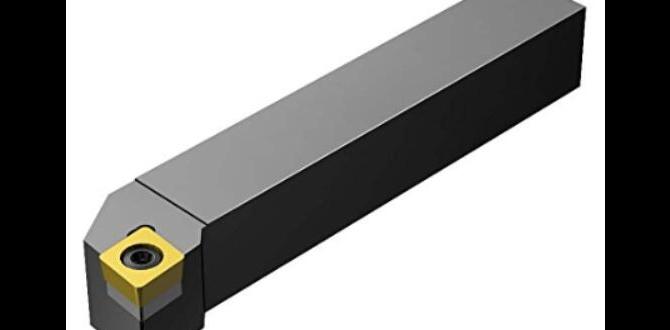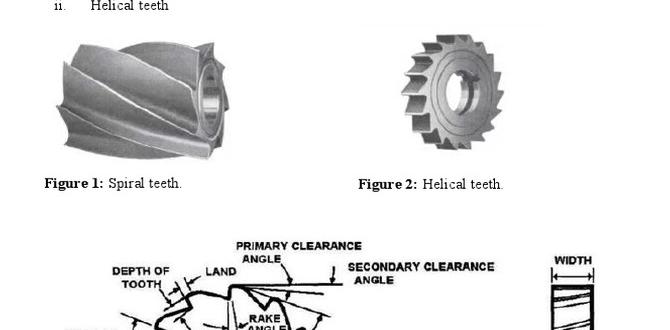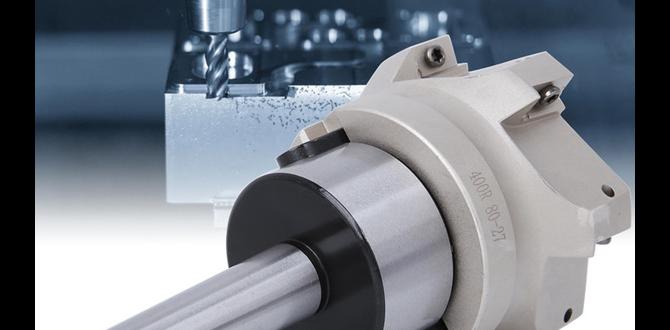Best Carbide End Mills for Inconel 625 Dry Cutting: Expert Guide. Discover how a specific carbide end mill can make tough Inconel 625 machining easy and efficient, even without coolant. Get pro tips for successful dry cutting.
Carbide End Mill: Your Secret Weapon for Inconel 625 Dry Cutting
Working with Inconel 625 can feel like trying to machine solid rock. This superalloy is incredibly strong, tough, and heat-resistant, making it a headache for many machinists, especially beginners. The good news? You don’t always need fancy coolants or super-powered machines to cut it effectively. With the right tool, specifically a well-chosen carbide end mill, you can tackle Inconel 625 using dry cutting methods. This might sound challenging, but by understanding how to pick and use the right end mill, you can achieve clean cuts and smooth finishes without the mess and complexity of liquid cooling. We’re going to walk through exactly what you need to know to make this difficult material manageable.
Why Inconel 625 is Such a Tough Nut to Crack
Before we dive into solutions, let’s quickly understand why Inconel 625 is known for being so difficult to machine. It’s not just a little tough; it’s designed to be. This nickel-chromium superalloy is prized for its exceptional strength across a wide temperature range, its resistance to corrosion and oxidation, and its ability to withstand extreme environments. These very properties, which make it invaluable in aerospace, chemical processing, and marine industries, also translate into significant machining challenges:
- Work Hardening: As you machine Inconel 625, the material directly around the cut can become even harder. This means each pass requires more force, and the tool is subjected to greater stress.
- Low Thermal Conductivity: Inconel 625 doesn’t dissipate heat well. This means heat generated by friction during cutting tends to build up right at the cutting edge, leading to premature tool wear and potentially damaging the workpiece surface.
- Gummy Nature: Some machinists describe Inconel as “gummy.” It can cling to the cutting tool rather than cleanly shearing away, leading to poor surface finish and chip buildup.
- High Cutting Forces: Due to its strength and tendency to work harden, Inconel 625 requires significantly higher cutting forces compared to more common metals like aluminum or even steel.
Traditionally, machining such tough materials involves copious amounts of coolant. Coolant helps by lubricating the cutting edge, washing away chips, and most importantly, removing the heat generated during the cutting process. However, dry cutting Inconel 625 can be beneficial in certain situations. It avoids the mess, the cost of coolant, and the need for coolant management systems. It’s faster to set up and cleaner for finishing operations. The key is having the right tool engineered for the job.
The Magic Tool: Carbide End Mills for Inconel 625 Dry Cutting
When we talk about dry cutting Inconel 625, the hero of the story is the carbide end mill. But not just any carbide end mill. We’re looking for specific features that allow it to thrive where others fail. For this challenging application, especially with a beginner’s focus in mind, a specialized end mill designed for high-temperature alloys and dry machining is essential. We’ll be focusing on a particular type: the 1/8 inch diameter carbide end mill with a 1/2 inch shank and an extra-long flute length.
Why This Specific End Mill?
Let’s break down why this combination of features makes it a “genius” choice for Inconel 625 dry cutting:
- Carbide Material: Solid carbide tools are inherently harder and can withstand higher temperatures than high-speed steel (HSS). This is non-negotiable for materials like Inconel.
- 1/8 Inch Diameter: A smaller diameter allows for shallower depths of cut and finer chip loads. This reduces the overall cutting forces and heat generated per pass, making it more manageable for lighter-duty machines and less aggressive for the material itself. It’s also excellent for detailed work and pocketing.
- 1/2 Inch Shank: This common shank size offers good rigidity and secure clamping in most standard milling machine collets and holders. It strikes a good balance between tool access and rigidity.
- Extra-Long Flutes: This is a critical feature. Longer flutes allow the tool to reach deeper into pockets and slots without needing to perform multiple setups or use specialized extensions. For Inconel, longer flutes often mean a higher flute count (e.g., 4 to 6 flutes) which helps with chip evacuation and can provide a smoother finish, but more importantly, they are often designed with specific edge preparations and coatings for heat resistance.
- Coating: While not explicitly stated in the keyword, high-performance end mills for Inconel often come with specialized coatings like AlTiN (Aluminum Titanium Nitride) or TiAlN (Titanium Aluminum Nitride). These coatings add an extra layer of hardness and thermal resistance, significantly extending tool life and improving performance in tough materials, especially when dry cutting.
This specific combination is designed to balance cutting efficiency, tool longevity, and surface finish specifically for the challenges of Inconel 625 in a dry machining environment.
Essential Setup: What You Need
Before we even think about making a cut, having the right setup is crucial. For Inconel 625 dry cutting with a carbide end mill, think precision, rigidity, and safety. Here’s what you’ll need:
1. The Milling Machine
You don’t necessarily need a behemoth, but your machine needs to be up to the task. A CNC mill is ideal for consistent, precise movements. For manual milling, ensure your machine has good rigidity, minimal backlash in the axes, and a sturdy base. Machines suitable for general steel or stainless steel work will likely be adequate if set up correctly.
2. The Workholding
This is paramount. Inconel 625 requires strong clamping to prevent any movement during the cut.
- Vises: A good quality, hardened vise that is precisely aligned to the machine table is essential. Ensure the vise jaws are clean and offer good surface contact. Soft jaws can be useful for delicate parts but for Inconel, hardened jaws are generally preferred.
- Clamps: If not using a vise, sturdy clamps that hold the workpiece directly to the table are necessary. Be mindful of clamping points to avoid deforming the part.
- Fixturing: For repetitive or complex parts, custom fixturing might be the best solution for ensuring rigidity and precise positioning.
3. The Tool Holder
A rigid tool holder is vital to prevent runout and vibration, which are detrimental to tool life and surface finish, especially with small diameter tools in tough materials.
- Collet Chucks: These offer excellent concentricity and rigidity. For a 1/2 inch shank end mill, you’ll need a holder with a 1/2 inch collet.
- Shrink Fit Holders: For the highest level of rigidity, shrink fit holders are an excellent, though more expensive, option.
- End Mill Holders: Ensure the holder’s set screw or clamping meachanism securely grips the shank without damaging it.
4. The End Mill
As discussed, the “carbide end mill 1/8 inch 1/2 shank extra long for inconel 625 dry cutting” is our star. Look for reputable brands known for high-performance cutting tools. Pay attention to the flute count (4-6 flutes are common for this application) and any mention of specialized coatings like AlTiN or TiAlN.
5. Measurement Tools
Precision is key. You’ll need:
- Calipers and/or a micrometer for accurate part measurement.
- A dial indicator for tramming the vise and checking runout on the spindle.
6. Safety Gear
This is non-negotiable.
- Safety Glasses: Always wear ANSI-approved safety glasses.
- Face Shield: Recommended for added protection.
- Hearing Protection: Milling can be loud.
- Gloves: Wear snug-fitting gloves to protect your hands from sharp edges. Avoid loose-fitting gloves that could get caught.
- Dust Filtration: While dry cutting, fine metal dust is produced. Ensure good ventilation and consider a dust collection system.
Feeds and Speeds: The Heart of Dry Cutting Inconel 625
This is where many beginners get intimidated, but it’s manageable when kept simple. For Inconel 625 and a carbide end mill, we need to focus on removing material efficiently while managing heat and tool pressure. The general rule for dry cutting tough alloys is slower spindle speeds (S) and moderate to higher feed rates (F). This is often referred to as chip thinning and can help manage heat by ensuring chips are cleared effectively and the tool isn’t rubbing.
Understanding the Terms:
- Spindle Speed (S), measured in RPM (Revolutions Per Minute): How fast the tool spins.
- Feed Rate (F), measured in inches per minute (IPM) or millimeters per minute (mm/min): How fast the tool moves through the material.
- Chipload (Cl): The thickness of the chip removed by each cutting edge of the tool. A good chip load is critical for tool life and surface finish.
General Guidelines for a 1/8″ Carbide End Mill in Inconel 625 (Dry Cutting)
These are starting points. Always consult the end mill manufacturer’s recommendations if available. A good rule of thumb for high-performance carbide end mills in stainless steels and superalloys is:
- Surface Speed (SFM): For Inconel 625 with uncoated carbide, start around 30-50 SFM (Surface Feet per Minute). For TiAlN/AlTiN coated carbide, you might push this to 50-80 SFM.
- Calculate Spindle Speed (S): S = (SFM 3.82) / Diameter (in inches).
- Chipload (Cl): For a small 1/8″ end mill, a chipload of 0.0005″ to 0.001″ per tooth is often a good starting point for dry cutting.
- Calculate Feed Rate (F): F = RPM Number of Flutes Chipload.
- Chip Thinning: When we use a small diameter end mill, especially with a higher feed rate relative to the spindle speed (or vice-versa), a phenomenon called “chip thinning” occurs. This means the actual chip thickness is thinner than the calculated chipload. This is often desirable in tough materials as it controls heat and cutting forces. Some CAM software has an option to “account for chip thinning.”
- Radial Depth of Cut (RDOC): For dry cutting tough materials, a shallow radial depth of cut is often recommended. This means the end mill doesn’t engage the full width of its cutting edge but only a fraction (e.g., 10-25% of the diameter). This significantly reduces cutting forces and heat.
- Axial Depth of Cut (ADOC): This depends on the flute length you have available and the material thickness. Start conservatively.
- Listen to the Cut: Your ears are a great tool. A smooth, consistent whirring sound is good. A high-pitched squeal or chattering indicates problems – likely too high a speed or feed, or insufficient rigidity. A grinding sound means you’re rubbing, not cutting.
- Ensure your milling machine is clean, lubricated, and in good working order.
- Securely fixture your Inconel 625 workpiece. Double-check that it cannot move during machining.
- Clean the vise jaws or clamping surfaces thoroughly.
- If using a vise, ensure it’s properly “trammed” to be perfectly square to the machine’s Z-axis.
- Select the correct collet for your 1/2 inch shank end mill and install it into your collet chuck.
- Insert the carbide end mill into the collet chuck, ensuring it is seated correctly.
- Tighten the collet chuck securely according to the manufacturer’s instructions.
- Mount the tool holder into the milling machine spindle.
- If your machine has a tool length setter, set the Z-height of your end mill accurately.
- Based on the guidelines above, program your initial spindle speed (S) and feed rate (F). For a 1/8″ end mill in Inconel 625 dry cutting, a good starting point might be:
- Spindle Speed (S): 1800 RPM
- Feed Rate (F): 7 IPM
- Axial Depth of Cut (ADOC): 0.050 inches
- Radial Depth of Cut (RDOC): 0.015 inches (approx. 12% of diameter for a 1/8″ end mill)
- Remember these are starting points. You will likely adjust them based on the cutting performance.
- Before cutting the actual part, you can manually “air cut” the program above the workpiece. This helps you verify the tool’s path, clearances, and the general sound of the machine.
- Carefully bring the tip of the end mill down to the surface of the Inconel 625. Use your machine’s DRO (Digital Readout) or jog controls.
- Set your Z-zero point at the surface of the material.
- Engage the feed rate. Start your program or manually feed the tool into the material using the programmed axial depth of cut (e.g., 0.050″).
- Listen carefully to the sound of the cut. It should be a consistent, relatively quiet machining sound, not a screeching or grinding.
- For pocketing or contouring, use shallow radial and axial depths of cut as recommended.
- Chip Evacuation: Since we are dry cutting, it’s vital to ensure chips are cleared away from the cutting zone. The longer flutes of the specialized end mill help, but you might need to program “peck drilling” cycles if you are plunging deeply, which involves retracting the tool periodically to clear chips.
- Pause and Inspect: Periodically, stop the machine, allow the tool and workpiece to cool for a moment if there
Let’s take an example using 50 SFM and a 1/8″ (0.125″) end mill:
S = (50 3.82) / 0.125 = 1528 RPM.
This is a general starting point. For coated tools, you might aim higher, say 2000-2500 RPM, but always start conservatively.
Assuming our 1/8″ end mill has 4 flutes and we aim for a chipload of 0.0008″ per tooth:
F = 1500 RPM 4 flutes 0.0008″ / flute = 4.8 IPM.
If you use a higher spindle speed (e.g., 2000 RPM):
F = 2000 RPM 4 flutes 0.0008″ / flute = 6.4 IPM.
Key Considerations for Dry Cutting:
Important Note: Feeds and speeds are highly dependent on the specific end mill geometry, coating, machine rigidity, workholding, and the exact grade of Inconel 625. Always start with conservative settings and increase gradually while monitoring the cut.
For a beginner, it’s wise to start with a well-known brand that provides recommended parameters for Inconel 625 or similar superalloys. Many tool manufacturers have online calculators or data sheets that can be invaluable. For example, tools designed for Inconel might be found on sites like Sandvik Coromant, a leader in machining solutions.
Step-by-Step Inconel 625 Dry Cutting with a Carbide End Mill
Now, let’s get down to the practical steps. Remember, safety first, always!








